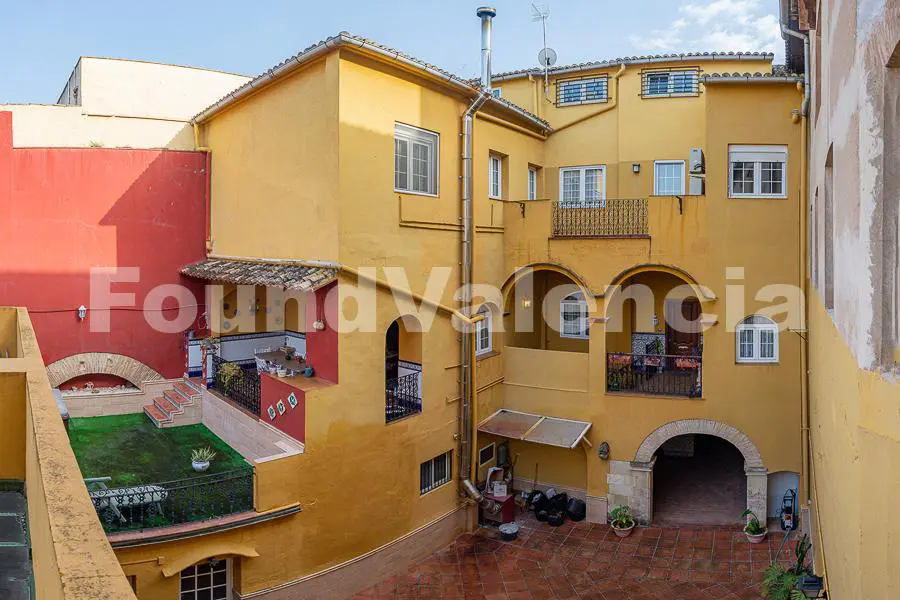Historic 13th century mansion in Xativa Valencia
One hour from Valencia, within the old town of Xativa, in the heart of this complete town, lies this wonderful luxury house. The property is located in a former convent of the order of the Trinitarians, founded by Jaime I in the 13th century and completely refurbished by its owners.
This exclusive property has 950 m² distributed in various architectural pieces built around a central courtyard.
Access to this spectacular construction is through the central courtyard, through the original arched gate from which the carriages of the time used to enter. Once in the courtyard we can access on the same level to a dining room or open-plan room ideal for large meetings, a gymnasium with large windows, a billiard and games room, a functional 70-metre storeroom with bathroom and a solarium terrace.
At the other end, we access through a beautiful handmade Valencian tiled staircase to the main house. From the imposing hall you can appreciate the magnitude of the original high ceilings with wooden beams, the Nolla mosaic floors and the incredible restored wooden doors with stained glass windows and lintels of the period. This floor houses a splendid living-dining room with three balconies overlooking the street, a very large fully equipped kitchen, a pleasant living room also with a balcony and a bathroom. From the kitchen there is access to a terrace overlooking the central courtyard where the barbecue area is located, with pantry and storage room, jacuzzi and solarium.
The second floor is distributed in a library area with balcony overlooking the street, three double bedrooms, two of them also with balcony, a functional laundry room, a bathroom and a complete master flat which includes the master bedroom with en-suite bathroom and a large wardrobe or dressing room. From one of the rooms there is access to a large attic space on the upper floor.
The property conserves elements of great historical and architectural value, among which it is worth mentioning again the nolla mosaic floors, the original lintels, arches and original doors which have been completely restored, the original handmade tiles, the high ceilings with solid wood beams, decorated plasterwork and niches and a beautiful original fountain in the patio. The property has heating by natural gas radiators and wood boiler, ducted hot/cold air conditioning throughout the house and in the gym and games area by split, double glazed PVC double glazed English style windows, decorative stained glass windows, piped music, hydraulic lift with large capacity for people with reduced mobility, solid wood interior carpentry and garage for several vehicles.
Xàtiva was declared a Historic-Artistic Site in 1982, due to the monumental wealth of its old quarter in general, and to the particular significance of its most emblematic monuments, which have also been declared Sites of Cultural Interest.
Among its most representative monuments are: the Castle, with remains from different periods; the Collegiate Church of Santa María (16th-20th century); the Hospital Mayor de Pobres (15th-16th century); the chapels of San Félix (13th century); of San José (18th century) and of Santa Ana (16th century); the church of San Pedro de la Cruz (16th century); the church of San Pedro de la Cruz (16th century); the church of San Pedro de la Cruz (16th century); the church of San Pedro de la Cruz (16th century); the church of San Pedro de la Cruz (16th century). XVI century); the church of San Pedro (XVII century); the church of San Francisco (XIV century); the Gothic door of the Trinitarians (XV century), the birthplace of Pope Alexander VI (XVI century); the House of Alarcón (XVIII century) or numerous urban palaces of the nobility of Setabria, from different periods.
































